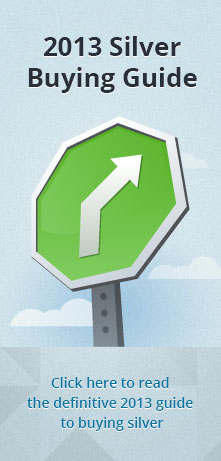Buying precious metals for investment is a roller coaster ride of market prices, the effects of world events, politics, mining trends, and more. Of all the precious metals, silver offers the lowest prices, but also experiences some of the highest volatility.
The initial outlay of cash to purchase silver is less than that of buying gold, making silver a feasible option for the typical private investor. It’s imperative to understand the fluctuations that affect silver prices before determining when and how much silver to buy.
Gold/Silver Ratio
The price of silver is often dependant on the price of gold. Silver prices lag until there is a bull run on gold, and once investors notice the reduced price of silver in regards to the robust gold market, it’s normally too late to invest in the silver at the lower market price.
Silver is often undervalued versus gold as silver lags behind gold until the final stage when gold prices trend. However, many world events and financial activity affect the price of silver.
The price of silver has a long history of change and advancement. The end of World War II brought the need for silver used in fabrication industries. Europe and Japan needed to be rebuilt and items such as electrical appliances, generators, and transmission systems included silver in their production process.
Silver Over the Ages
Also in the 1960s was a surge in mass-market photography equipment, and print film and the paper needed both contain silver. Treasury production of silver coins increased, and the price of silver rose to $1.29 an ounce.
In the 1970s, fabrication needs increased after interest in silver worldwide began inching up the price in the late 1960s. The increased need for silver was met by silver inventories held by private investors and the United States Treasury’s stable price of silver went from a fixed price to an average weighted price of $3.21 from 1971 to 1978. The latter part of this trend saw prices at $4.35 and $5.40.
In early 1980, world political events and economic struggles along with a shortage of silver, triggered silver prices to rise and by the last quarter of 1979, silver prices rose to $15.00 and $25.00 per ounce and by January 1980, silver rose to $49.45 based on two entrepreneurs, the Hunt brothers, who accumulated large amounts of silver. Prices fell back to $11.00 in March 1980 and dropped more during the 1980’s ended at an average of $4.95 an ounce.
During the 1990’s, mine production of silver saw only a minor increase of 4% while the demand for industry fabrication rose 22%. This caused the price of silver to climb from an average price of $4.83 in 1990 to $5.22 in 1999.
The influx of large amounts of silver from China kept the price of silver in check in 1999 and the early part of the 2000’s. By December 31, 2001, silver finished at $4.52. By early 2005, investment interests and improved fabrication industries drove silver prices up and silver averaged an increase to $13.38 in 2007.
By 2008, a soaring interest and investment in silver exchange traded funds, EFTs and silver investments and coin collecting increases in 2009 pushed the price of silver up to an average of $14.67. By 2010, the price of silver averaged $20.19, the highest level since the surge in 1980, a marked increase over the 2009 price.
Due to high investment interest in 2011, silver rose to $35.12 an ounce and the future of silver prices is predicted to rise sharply over 2013 and 2014. The best time to buy silver is now, before the economy and uncertain state of world politics drives up the demand and ultimately the price of silver.

